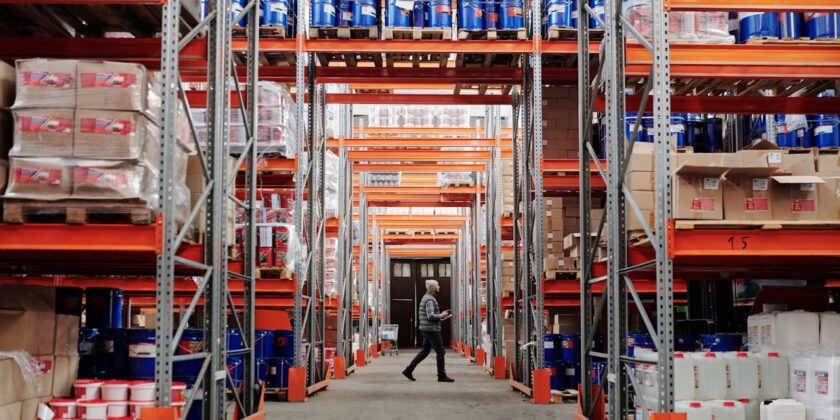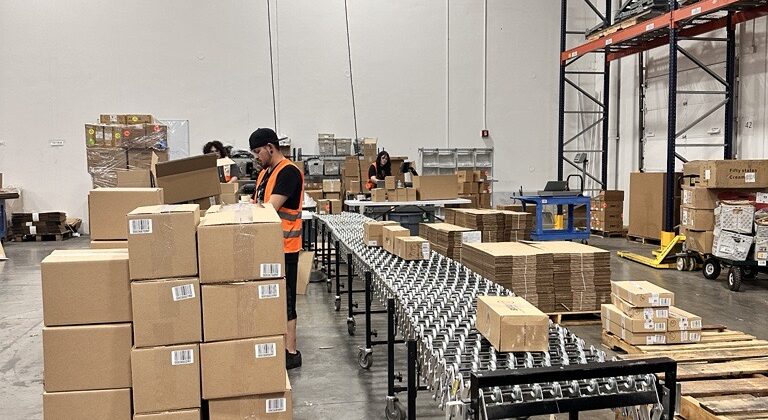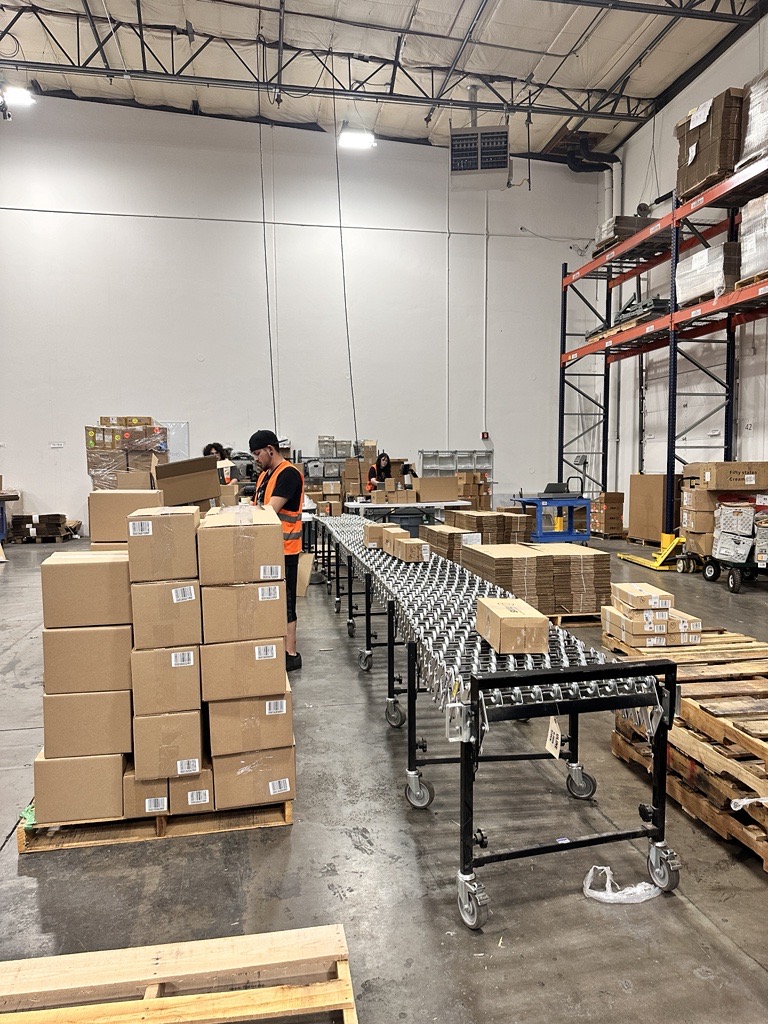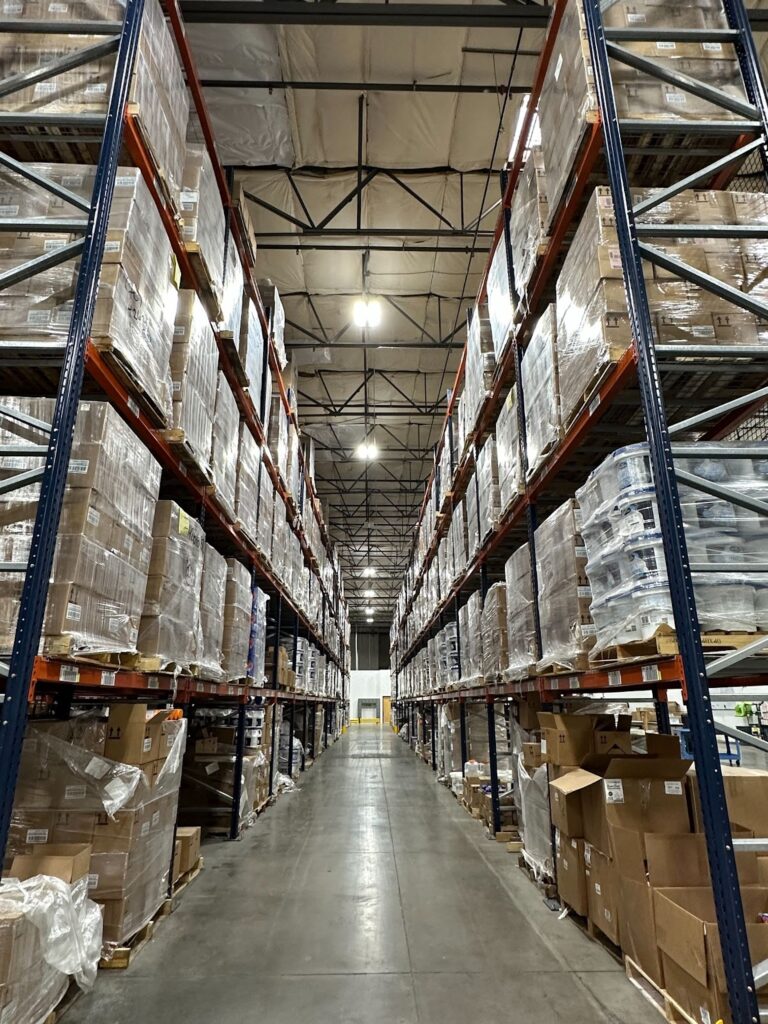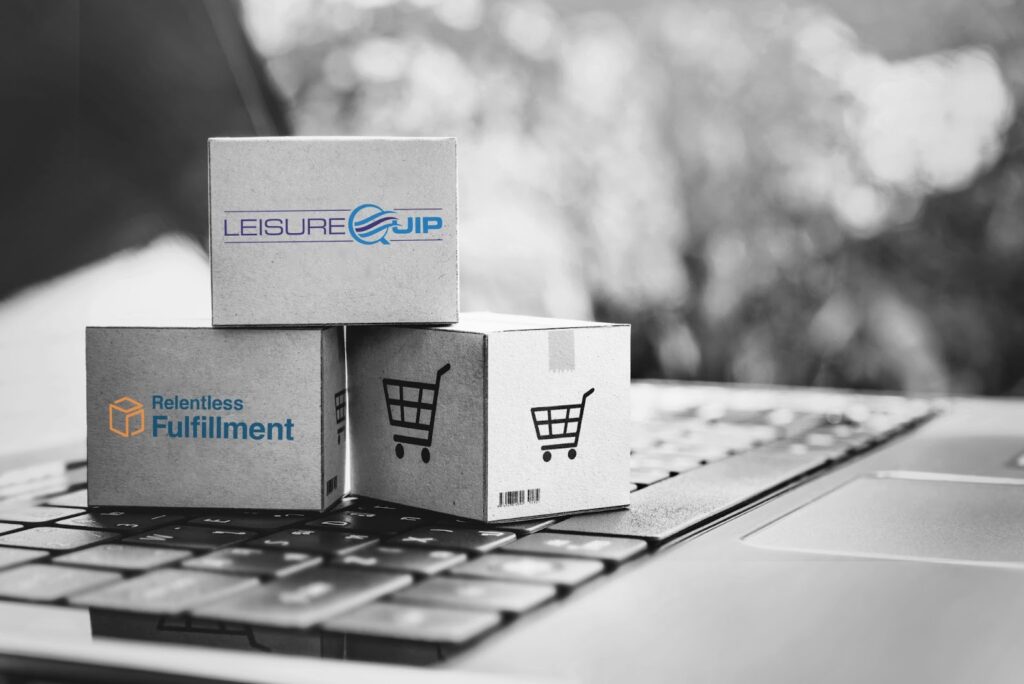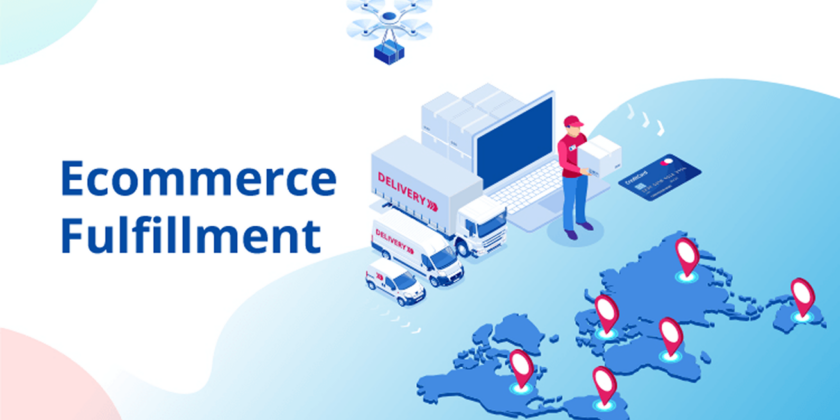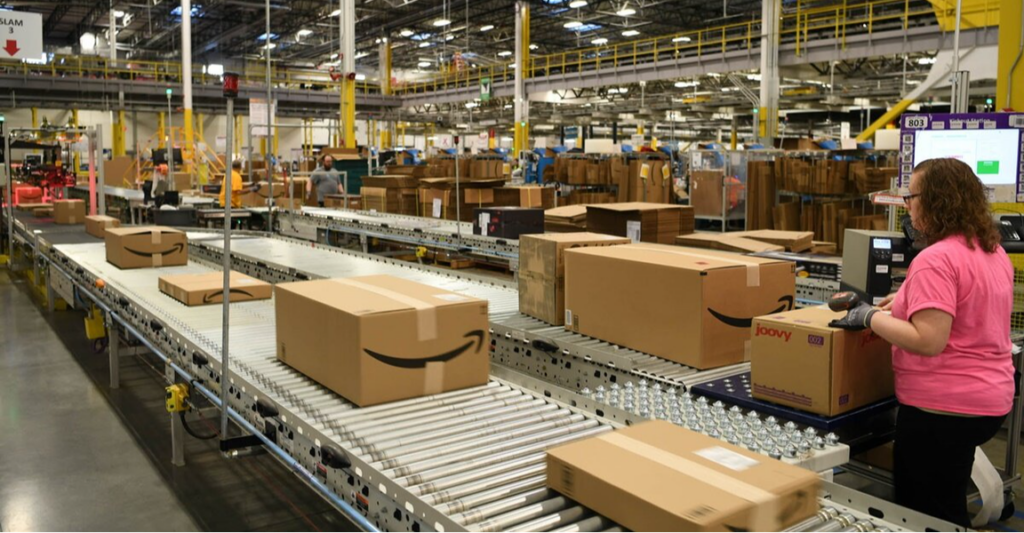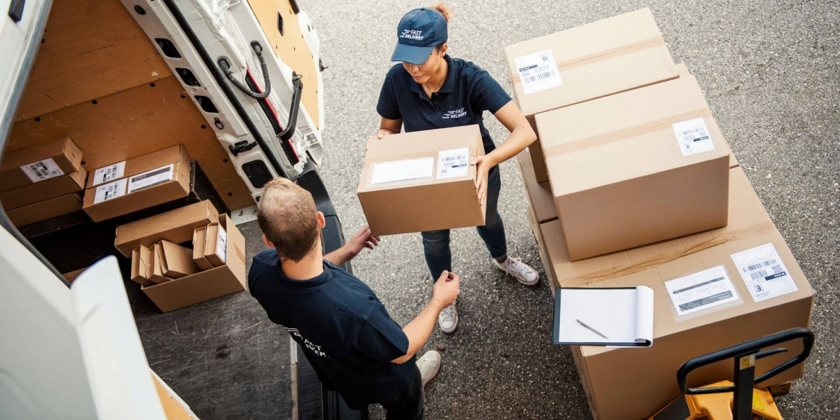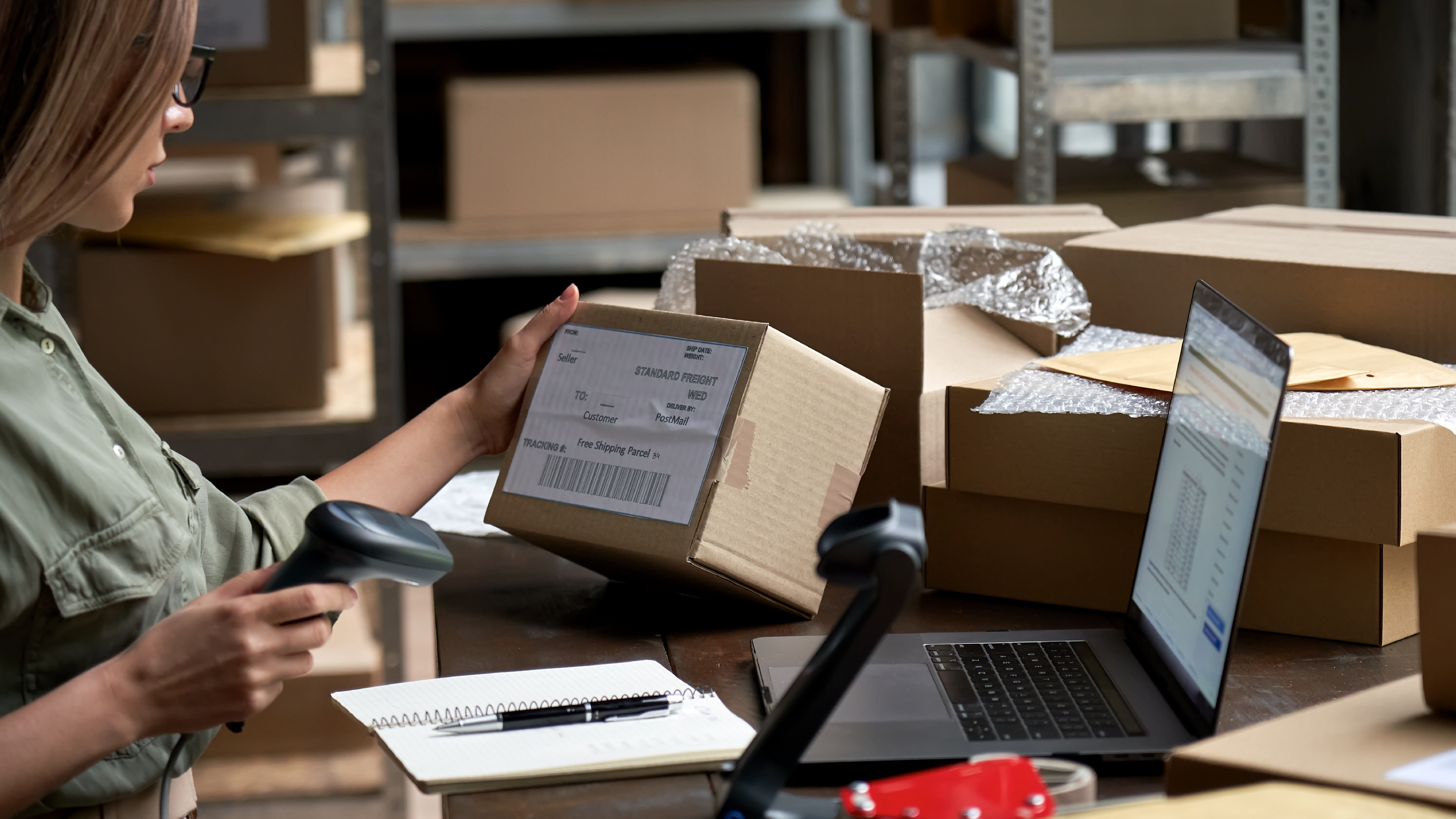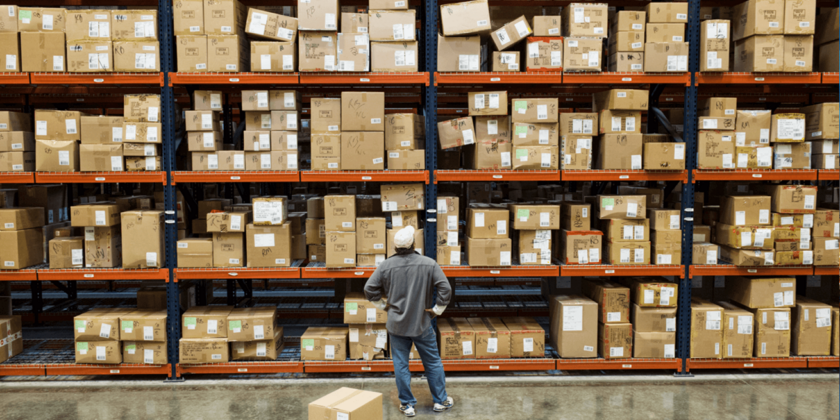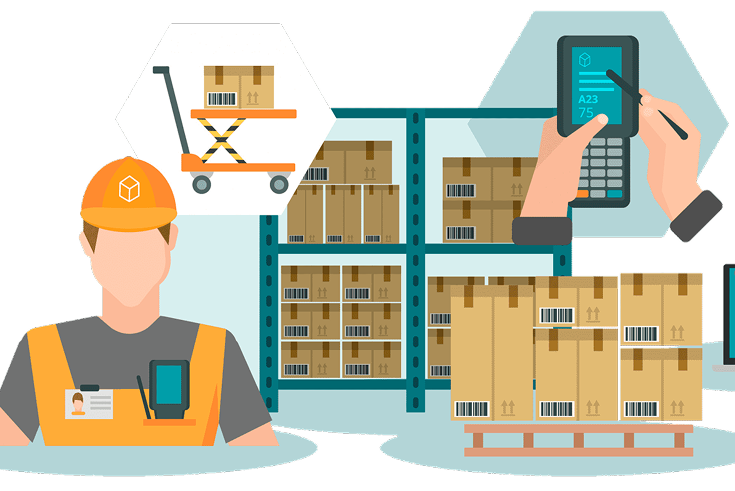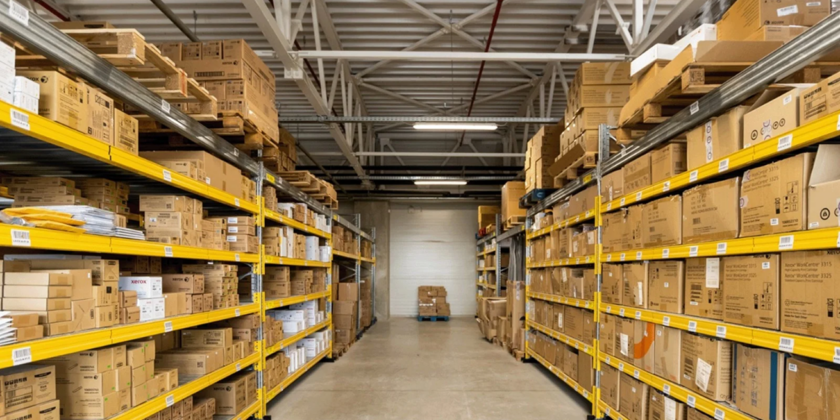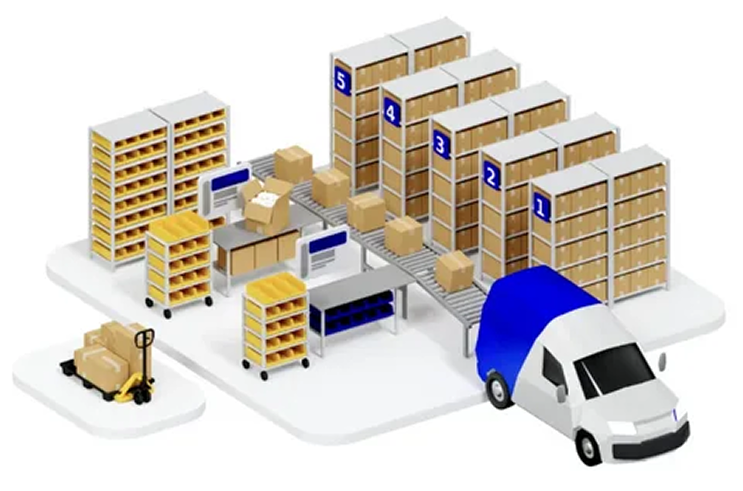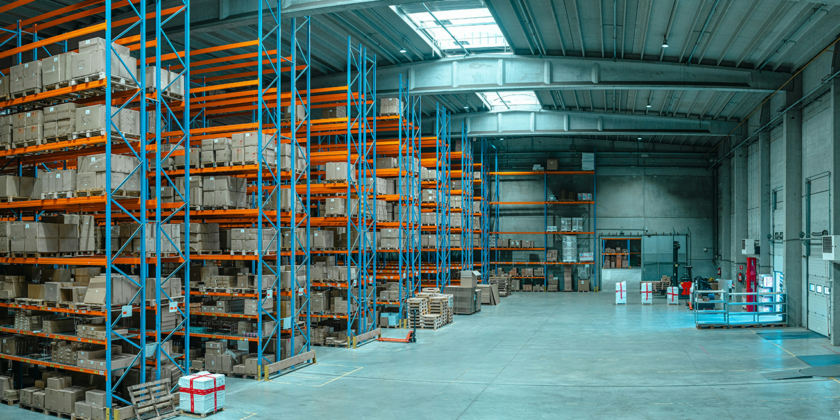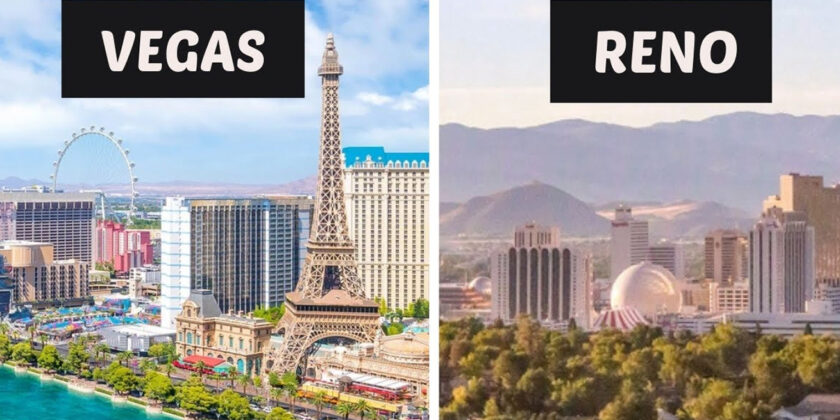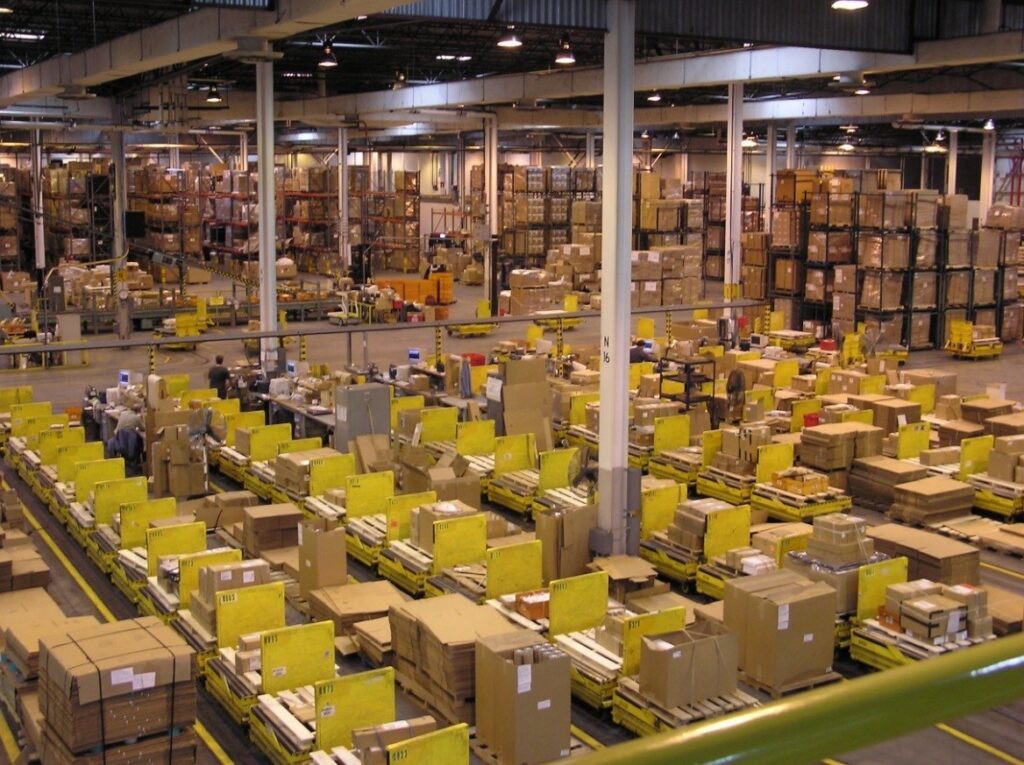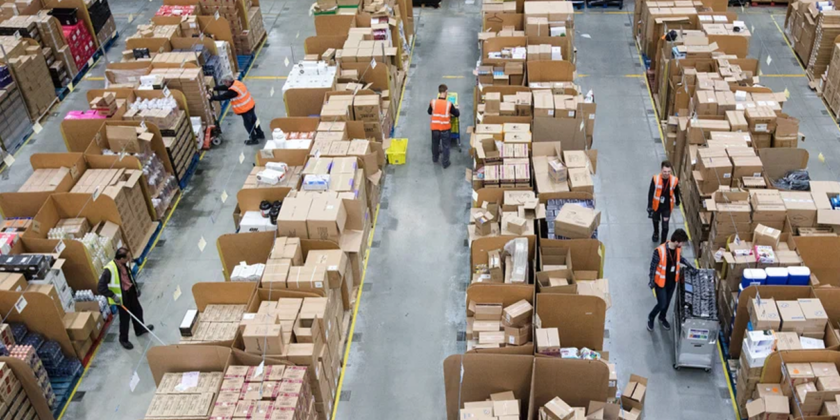Order Fulfillment Operations: A Complete Guide

E-commerce brands are becoming increasingly profitable, with studies reporting that global online sales will reach $8 trillion by 2027. To meet this growing demand, however, companies need better strategies to manage their order fulfillment operations.
Getting your products to your customers involves a lot of moving parts. Companies need efficient ways to process orders, manage inventory, pack items, ship orders, and handle returns. These steps will become even harder to manage as more people order online and expect a smooth delivery process.
You need to choose the right order fulfillment model that makes sure your products arrive on time and in proper condition. This builds a brand of reliability for your company and encourages customers to stick with you.
Here’s a complete guide on the ins and outs of running order fulfillment operations — from selecting a fulfillment model that works for you to adopting strategies that optimize your delivery process.
Key Components of Order Fulfillment
Getting your orders from your warehouse to your customers’ doorsteps might sound simple, but the reality is that each step of the order fulfillment process comes with its own challenges.
Companies often need to manage multiple warehouses or fulfillment centers, handle fragile items, and record hundreds of daily transactions. Accuracy and good communication are key to making sure everyone does their job properly.
Let’s take a closer look at what needs to be done at every step in the delivery process — and the issues you need to be prepared to address.
Receiving and Inventory Management
In the receiving and inventory management phase, your items are delivered from your suppliers, get quality checks, and receive a stock keeping unit (SKU) code to assist in identification. All products are logged into your inventory management system so your stock levels can be tracked and recorded as you sell off each item.
Items get stored either in warehouses or fulfillment centers. Unlike warehouses, which are used to store goods for the long term, fulfillment centers are specialized logistics facilities designed for rapid inventory turnover. They handle everything in the e-commerce supply chain, including receiving, storing, picking, packing, and shipping.
Keeping accurate records of your inventory levels and locations is necessary to avoid overstocking or understocking items. This data also aids in demand forecasting by analyzing stock levels, past sales trends, and customer demand patterns to make predictions about future inventory needs. Because sales can fluctuate during peak seasons, making accurate forecasts helps avoid stockouts and keep costs under control.
Order Processing and Picking
Once customers start placing orders, you need to get this information to your warehouse employees to accurately locate and retrieve items for delivery.
During processing, your system must verify all order details and generate a list of items to be picked from your inventory. Avoiding errors is crucial, as accidentally picking the wrong item can lead to shipping delays and hurt customer satisfaction.
To save travel time during retrieval, you can assign workers to pick multiple orders at once, a process called “batch picking.” You could also assign workers to key areas to retrieve items (“zone picking”) or base your picking times on priority or carrier schedules (“wave picking”).
Many companies automate the picking process by using robotic arm systems and automated guided vehicles (AGVs). This makes item retrieval faster and more accurate.
Packing and Shipping
The retrieved items are then sent to a packing station to be weighed, labeled, and secured in boxes or mailers. Packers also need to add protective materials to keep items safe in transit and include key documents, like packing slips or invoices.
This stage is now often fully or partially automated, with automated machines handling packing. Software can also calculate shipping costs to select the best available carrier for shipping items. Not only does this save money, but it reduces human error.
Handling Returns
Offering a hassle-free return policy improves customer satisfaction and restocks your inventory with resalable merchandise.
To facilitate returns, allow customers to print their return labels online, either through a downloadable PDF file or a link. This can reduce shipping costs and make sure the returned product is sent to the right location.
After receiving a returned item, your staff must inspect its condition and send it to be restocked, refurbished, or disposed of. Refunds should be processed quickly, and stock levels must be updated to reflect returned items. To expedite this process, invest in an automated system.
Different Models of Order Fulfillment
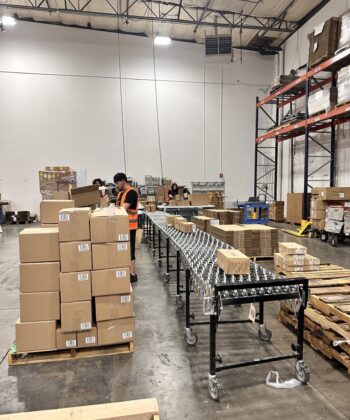
Handling all your orders in-house may work to a certain point, but if you start having inventory problems, late orders, or issues with mispicks, you’ll want to work with a fulfillment partner.
Having someone else to handle the logistics of inventory management, storage, order processing, shipping, and returns eases your workload so you can focus on key tasks. This also lets you expand your e-commerce business without sacrificing quality or customer satisfaction.
Of course, you’ll want to choose a fulfillment model that fits your needs — or combine them into a hybrid solution for your unique business. These are the top options for order fulfillment operations models.
In-House Fulfillment
With in-house fulfillment, your company manages the entire order fulfillment process internally without outsourcing any steps to a third-party service. Everything, from inventory management to shipping and returns, is handled in-house, giving you complete control over how the entire process is managed and customized.
While this can make communication and turnaround times faster and more efficient, it does limit you in how much you can scale up your operations without losing quality, especially during peak seasons when fluctuating demands can strain your resources. Handling everything internally also means you’re responsible for managing your order teams and investing in facilities and technology, which can be time-consuming and expensive, especially as your business grows.
Third-Party Logistics (3PL)
When you outsource logistics functions to a third-party logistics provider (3PL) like Relentless Fulfillment, you’re relying on a partner organization to handle key components of your supply chain management strategy. This includes warehouse storage, inventory management, and order fulfillment. Some 3PLs offer additional services, such as kitting (bundling products), reverse logistics, and customized shipping.
3PL providers allow you to send inventory from your manufacturers or storage spaces to 3PL warehouses. You can then submit customer orders directly to the 3PL and have their workers pick and pack the ordered items for shipping.
Using a 3PL is ideal for e-commerce brands that want to grow their business. 3PL warehouses let you store more inventory and reduce your operational expenses. You can also reduce your shipping costs by taking advantage of a 3PL’s location network.
For example, Relentless Fulfillment is based in Reno, Nevada. This provides us with cheaper labor costs than California, resulting in lower fulfillment expenses for your business.
Reduced leasing rates also save money on warehouse space, and Reno’s central location provides access to efficient shipping routes across the United States. In addition, our proximity to the Port of Oakland lets us offer reduced drayage costs for transporting goods from the port to our warehouse.
Keep in mind that not all 3PLs are the same, and you may need a specialized 3PL if you ship items like beauty products that require special handling. A specialized 3PL like Relentless Fulfillment can provide temperature-controlled storage and brand-specific packaging that elevates cosmetic fulfillment. This results in greater customer satisfaction and retention.
Dropshipping
Do you have limited space to store your products? Dropshipping can provide you with the ability to offer your customers a wide range of products without investing a lot of money upfront.
In this order fulfillment model, an e-commerce business outsources the entire fulfillment process to the supplier. Instead of handling order fulfillment in-house, orders get forwarded to suppliers that ship items directly to customers.
This provides e-commerce brands with several advantages. Small businesses and startups can run e-commerce businesses without in-house warehouse space or inventory. Online stores that specialize in marketing or testing out new items can focus on promoting products without purchasing inventory. Dropshipping also allows you to scale up your business without worrying about inventory logistics.
On the other hand, because you’re not handling your products directly, you won’t have as much quality control. Being dependent on an outside supplier also means you can experience delays or product shortages if your partner’s supply chain has problems. This can result in poor customer satisfaction and bad reviews.
Hybrid Solutions
If none of the order fulfillment models above suit your business needs, you can always combine different fulfillment methods and build a customized solution.
For example, if you handle both B2B and B2C orders, you can manage consumer orders through a dropshipping service while using a 3PL service for B2B orders. Alternatively, you can handle orders for proven products in-house and test new products via dropshipping.
While managing multiple fulfillment partners and models can be complex, hybrid solutions provide you with a flexible way of adapting to different market conditions and optimizing your costs for unique situations.
Strategies for Optimizing Your Order Fulfillment Strategy
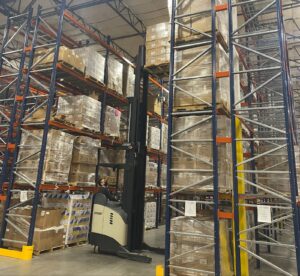
Selecting the right order fulfillment model for your company is only the first step in making sure your delivery process runs smoothly. Incorporating technology and specialized tactics into your day-to-day operations is key to making sure your e-commerce business can handle the influx of orders, especially during peak seasons.
Fortunately, advances in order fulfillment software and business practices can streamline your workflows. By following these strategies, you can ease the strain on your employees while maintaining — and even improving — quality standards.
Selecting the right order fulfillment model for your company is only the first step in making sure your delivery process runs smoothly. Incorporating technology and specialized tactics into your day-to-day operations is key to making sure your e-commerce business can handle the influx of orders, especially during peak seasons.
Fortunately, advances in order fulfillment software and business practices can streamline your workflows. By following these strategies, you can ease the strain on your employees while maintaining — and even improving — quality standards.
Automating Processes
Are you still tracking inventory manually? Do your workers need to hunt through your warehouses to pick and sort through items? Does packing products eat up a lot of your company’s time?
Automating these processes frees up you and your team for more strategic tasks, like identifying inefficiencies or analyzing inventory data, which require more critical thinking skills. Turning manual tasks over to automated systems also improves accuracy and efficiency, leading to better customer satisfaction.
For instance, robotic picking systems can work 24/7 in warehouses, retrieving items from storage faster and with greater accuracy than human workers. This reduces labor costs and improves employee safety by letting robotic arm systems handle potentially dangerous tasks like lifting and moving heavy objects.
Even during busy seasons where product retrieval can strain your workforce, robots can handle a larger number of orders, letting you keep up with demand.
Robotic aid also extends to the packing process. You can use automated packing machines to fold, secure, and pack items efficiently, further reducing labor costs. Likewise, automated labeling systems let you print and apply shipping labels to packages faster and more accurately than manual systems.
In addition, order fulfillment software can integrate with your existing systems and automate inventory tracking, payment processing, and order confirmations. This speeds up the process of dispatching orders and minimizes manual data entry errors, benefiting both your company and customers.
Optimizing Warehouse Layouts
Employing robotic picking systems to handle item retrieval in your warehouses or fulfillment centers isn’t the only thing you can do to improve efficiency. Your warehouse space can be reorganized to maximize your use of available space and minimize travel time and errors.
To begin, you can create separate zones for receiving, storing, picking, packing, and shipping to make sure robot and human employees know where to work. Optimize your storage space by using shelves and racking systems to create more vertical space.
Place popular items near the picking areas to shorten travel time. Make sure your aisles are wide and clear enough for all your traffic, keeping in mind that certain robotic systems may need more space to work alongside humans.
Create safety protocols for warehouse employees. Human workers need good lighting, noise insulation, and ventilation to work safely. Robots need sensors to avoid colliding with people and obstacles, and should receive regular maintenance and inspection.
You also need to provide signage and safety procedure training so workers are informed of potential workplace hazards and know what to do during evacuations and other emergencies.
Ensuring Inventory Accuracy
Accurately managing your inventory prevents costly errors like overstocking or understocking your products. Knowing where every item in your inventory is located streamlines your picking, packing, and shipping processes, optimizing workplace efficiency. Regularly reviewing your inventory data also lets you know how many products you need during different times of the year to meet customer demand.
Staying on top of this requires multiple tactics. Invest in barcode and scanning systems like radio-frequency identification (RFID) tags that let you track inventory movement in real time. This results in more accurate inventory counts and fewer errors.
Warehouse management system (WMS) software helps manage the order fulfillment process by automatically tracking inventory levels in multiple warehouses. Software tools can also analyze historical data and forecast demand for certain products, making sure you keep enough items on hand to satisfy your customers.
At the same time, you don’t want to automate all your inventory management tasks. Having employees conduct regular inventory audits and physical inventory counts lets you verify your records. Make spot checks in various areas of the warehouse a regular part of the workday to maintain quality control.
One effective inventory auditing technique is cycle counting. With this process, your workers count a portion of the inventory each day or week and compare it against system records for any discrepancies.
Regular cycle counts can catch issues with overstocking, out-of-stock items, or theft before they become big problems. And because they don’t require as much time as full physical counts, they’re more cost-effective and less disruptive to warehouse operations.
Leveraging Innovative Technology
WMS software and robotic systems can result in a more efficient order fulfillment process by automating manual tasks and augmenting your human workforce. However, e-commerce brands can go beyond these tools to leverage many more innovative technologies for every step in order fulfillment.
For instance, the ability of connected devices to form a shared network that facilitates communication (called the “Internet of Things” or IoT) can greatly streamline the order fulfillment process. IoT-enabled vehicles and robots can transmit information on their location and condition, helping companies optimize routes, monitor fuel consumption, and schedule maintenance checks. This saves time and money while facilitating smoother deliveries.
Software tools can also integrate multiple sales channels, including online stores and mobile apps, into one unified system. This makes it more convenient for customers to buy, return, or receive items through any preferred channel, improving the customer experience. Being able to manage inventory and orders in real-time from a single system also makes it easier for companies to organize their workflows, increasing efficiency.
E-commerce brands can use blockchain technology to provide a secure and decentralized record of their products’ journey in the supply chain. This makes it simpler for companies to track inventory, manage logistics, and confirm ethical sourcing. Blockchain also increases transparency by letting customers verify the source and status of their orders, building trust and ensuring accountability.
As order fulfillment technology improves, its ability to streamline workflows and decrease costs will only grow. Companies should keep an eye on innovations to see where they can be applied in their fulfillment operations.
Choose the Right Order Fulfillment Partner: Let Relentless Fulfillment Work for You
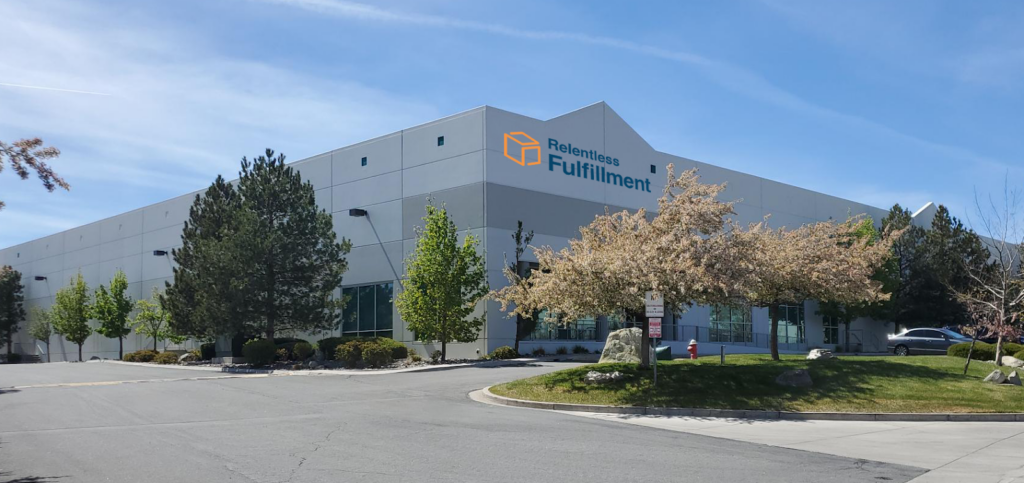
As ordering products online becomes more common, customer expectations for a smooth fulfillment process will keep getting higher. Companies need fulfillment models and strategies in place to provide timely delivery, low shipping costs, and excellent customer service. E-commerce brands that can provide this in their order fulfillment process will find it much easier to scale up their operations as demand for online stores grows.
Partnering with the right 3PL provider results in a competitive advantage, allowing you to grow your business with confidence. Managing inventory, retrieving items, packing products, and handling returns all become much simpler when you have a specialized 3PL managing your logistics while you concentrate on more strategic initiatives, like marketing or product development.
At Relentless Fulfillment, we provide scalable fulfillment services that grow with your business. Our system integrates directly with your online marketplace, allowing us to work based on your specifications.
Whether you need help managing inventory, packing delicate items, or getting orders shipped on time, we can build a custom solution that fits your needs. Learn more about how we can optimize your order fulfillment operations by requesting a custom quote today!

